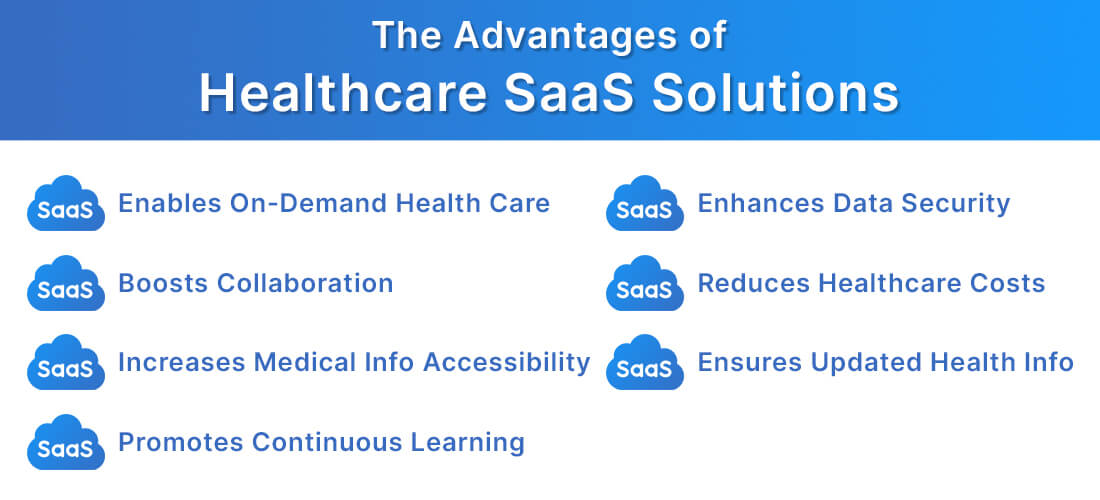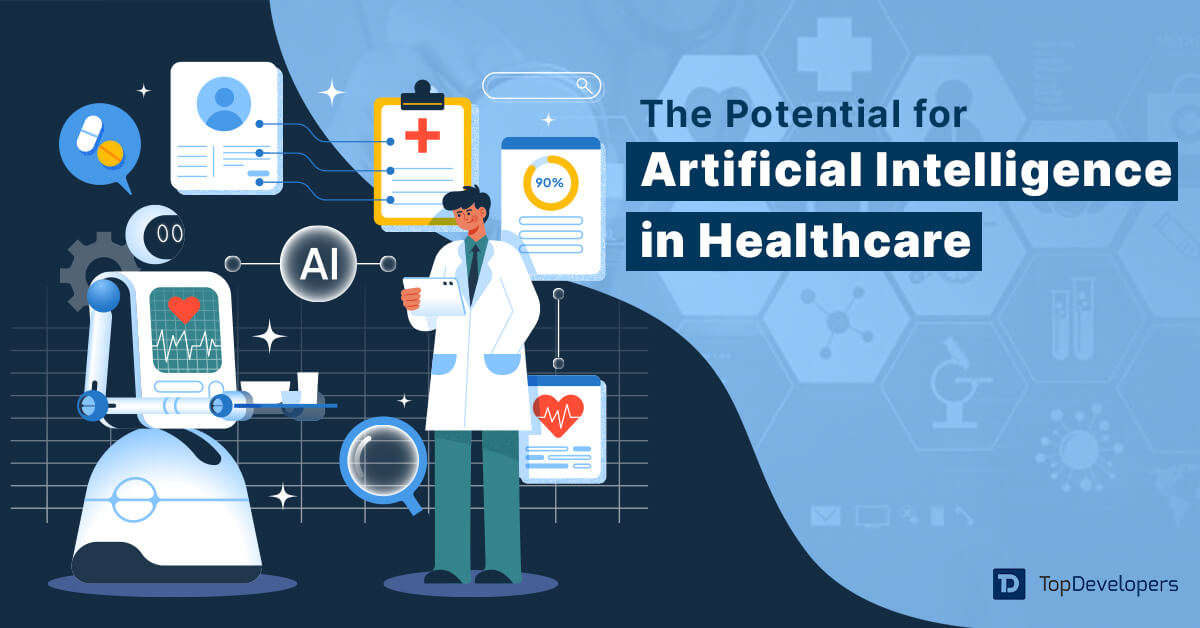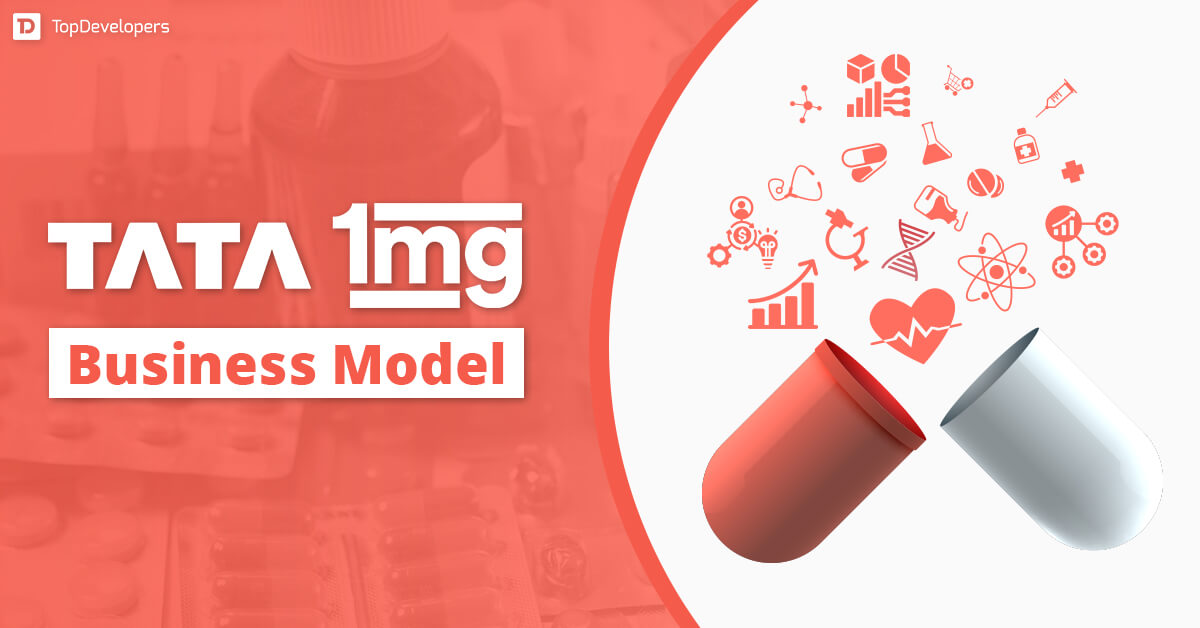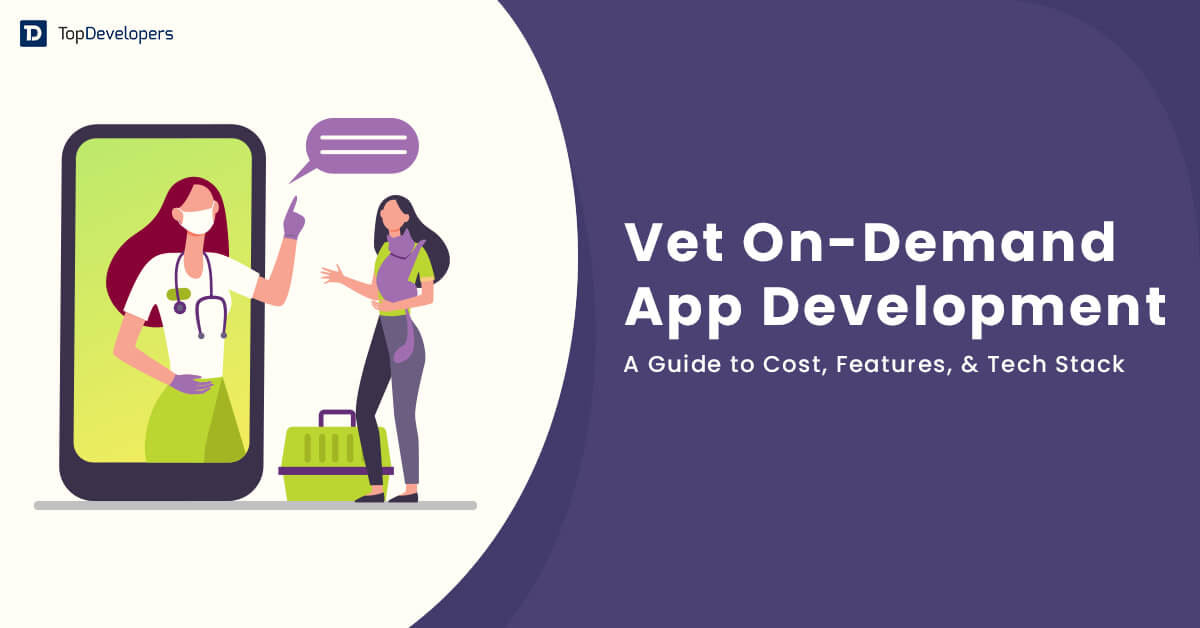
Technology adoption in the healthcare sector has many benefits, from reducing the severity of chronic illness to improving patient safety to lowering healthcare costs. Over the last decade, the healthcare landscape has warmly embraced advanced technologies such as big data, cloud computing, and mobile technologies.
Nowadays, SaaS technology is gaining traction in the healthcare space to improve healthcare processes, establish a secure intranet, optimize healthcare operations, minimize errors, and ensure effective practices that raise the bar of patient care. These key benefits drive the SaaS healthcare market value to $64 billion by 2025.
In this blog, we will walk you through an overview of healthcare SaaS, top trends in healthcare SaaS, and the benefits of healthcare SaaS for the medical industry. Let’s dive in!
Table of Contents
- What Is Healthcare SaaS?
- Which Top Healthcare SaaS Trends Are Currently Driving the Sector?
- Artificial Intelligence
- Multiple cloud strategy
- Vertical SaaS
- Pay-per-use model
- Micro SaaS
- API connections
- DaaS revenue
- PaaS migration
- Edge computing
- Mobile health solutions
- Telemedicine solution
- Patient self-service platforms
- Blockchain-powered data security solution
- Value-based care model
- Data interoperability
- Cybersecurity and compliance
- How Is Healthcare SaaS Beneficial for the Healthcare Landscape?
- Facilitating health on demand with telemedicine
- Enabling healthcare pros to collaborate better
- Improved accessibility and transparency into medical info
- Fosters continuous learning for medical pros
- Data security increased by notches
- Making healthcare facilities cost-effective
- Up-to-date information is guaranteed
- Ready to Revolutionize the Medical Industry With SaaS?
What Is Healthcare SaaS?
Healthcare SaaS provides a range of cloud-based software solutions for hospitals, clinics, or healthcare professionals. It includes EMR (Electronic medical records), HER (Electronic health records), PACSs, RCM, billing, and telehealth solutions.
These solutions are simplifying healthcare business processes, optimizing operations, and improving workflow with patient data analysis and educated decisions. To reap these benefits, healthcare businesses outsource the development and maintenance of SaaS applications to top healthcare software developers.
The outsourcing option enables healthcare organizations to cope with continuous development in healthcare SaaS and enjoy the maximum advantages with SaaS adoption. Let’s go through top SaaS trends in the healthcare industry that are changing the way medical services are offered.
Which Top Healthcare SaaS Trends Are Currently Driving the Sector?
Revolutionary healthcare SaaS technology is evolving to take medical services to the next level with new trends. Look at the top SaaS healthcare trends that leading software development companies recommend during SaaS healthcare application development.
Artificial Intelligence
AI technology leverages and automates SaaS healthcare operations such as finding patterns for threat detection, identifying security issues, and keeping sensitive data secure.
Multiple cloud strategy
This strategy helps healthcare businesses to lower the interregional bandwidth cost and improve the capabilities of arranging and analyzing healthcare data.
Vertical SaaS
Vertical SaaS solutions are largely used as compared to horizontal SaaS solutions for providing custom solutions for customer support and supply chains.
Pay-per-use model
It acts as a subscription model that enables users to access healthcare solutions in exchange for a specific amount. Now, it’s presenting alternatives for paying temporary staff.
Micro SaaS
The trend facilitates tailored, scalable solutions that are built at reasonable rates, which makes it a good fit for individual healthcare professionals or small clinics.
API connections
API connections ensure seamless data exchange among healthcare services and facilitate integration with third-party applications to extend the capability of SaaS healthcare solutions.
DaaS revenue
The data-related service is gaining traction for providing rich insights that help make educated decisions that increase healthcare business ROI.
PaaS migration
The platform as a service is a boon for healthcare organizations for moving data and applications to the cloud, which enables easier access without using a physical server.
Edge computing
Edge computing behaves like a mini-computer that stores data and functions even without the internet, which makes it a true bliss for healthcare organizations.
Mobile health solutions
Mobile health apps compatible with wearable devices allow users to track their health-related things such as sleeping patterns, heart rates, blood pressure, and step count. It’s encouraging people to stay healthy and make the right choices.
Telemedicine solution
With the growing need for serving remote patients immediately, users increasingly look for telemedicine solutions allowing them to consult healthcare professionals in real-time.
Patient self-service platforms
With the recognized need for patients to actively participate in health treatment at all levels, the patient self-service platform allows patients to engage in care.
Blockchain-powered data security solution
As blockchain technology operates on a distributed network with cryptography techniques, it ensures all data records are immutable and impossible to manipulate or steal. It ensures data remains securely stored and cannot be tampered with.
Value-based care model
Quality and affordable healthcare is shifting towards predictive and preventive healthcare using IT solutions to improve health outcomes and deliver value care to patients.
Data interoperability
Data sharing among two or more systems or entities in healthcare is complex, but it’s essential to encourage care coordination. Data interoperability requires trusted digital workflow, enabling centralized data management.
Cybersecurity and compliance
The growing instances of cyberattacks and improving healthcare compliances getting stringent require a secure healthcare IT system that manages healthcare data and provides value-based care.
How Is Healthcare SaaS Beneficial for the Healthcare Landscape?
Healthcare SaaS technology benefits healthcare organizations in different ways using the combination of various IT solutions. Some healthcare software advantages that healthcare organizations avail of distinctively are as follows.
Facilitating health on demand with telemedicine
The growing chronic illness and rising demand for remote patient monitoring are the major reasons behind telehealth solutions’ popularity. The telemedicine market size will reach $330 billion by 2029 at a CAGR of 13.88% between 2024 to 2029. It’s found that in-person consultation is tedious and expensive as compared to online healthcare consultations, which is driving the telemedicine market.
Telemedicine involves monitoring the patient, providing care, and sharing required information using the latest technologies and devices/hardware that both patients and healthcare professionals have. Remote monitoring enables identifying diseases proactively and helps patients during emergencies. Hence, it’s a boon for people living in urban areas or urban patients who find it difficult to reach out to top medical practitioners.
Enabling healthcare pros to collaborate better
Under the single roof of healthcare organizations, multiple things are going on, from healthcare consulting to staff nursing to lab tests. Collaboration among medical staff with access to real-time information through a connected system is important to streamline the treatment process. Healthcare SaaS technology-powered healthcare management systems eliminate back-and-forth among medical staff and allow them to get connected and collaborate quickly.
The seamless interactions of medical staff, not only in different departments but with medical specialists of distinct hospitals, help get second opinions from healthcare experts. It’s ideal in the treatment of critical diseases of the patients as the experience of other healthcare professionals results in better care. Such a solution can connect more than 1000 medical staff members with cross-collaboration with country-specific healthcare experts.
Improved accessibility and transparency into medical info
As healthcare organizations are warmly embracing digital healthcare to a great extent, electronic health records or electronic medical records are leveraged at scale. The Global Clinical EHR Systems Market size is estimated at USD 20.87 billion in 2024 and is expected to reach USD 28.13 billion by 2029, growing at a CAGR of 6.15% during the forecast period (2024-2029).
Electronic health records (EHRs) make patient’s health-related data more accessible, and the insights allow professionals to make data-driven decisions, which, in turn, improve patients care. It’s an invaluable tool when the patient cannot respond in critical health situations. The rising adoption of electronic medical records makes the healthcare process transparent, and even healthcare institutions can share these records with patients themselves.
Fosters continuous learning for medical pros
Irrespective of the discipline in a healthcare organization, every member of the medical staff needs to stay updated with the latest technological innovations and trends for better care delivery. It requires continuous learning by joining courses or attending seminars. The healthcare learning management systems market is forecasted to reach $2.2 billion by 2026, growing at a CAGR of 24.7% from 2021 to 2026.
However, busy schedules won’t allow medical staff to learn continuously. That’s where a learning management system powered by SaaS technology facilitates healthcare training right on the devices that staff is using. It involves providing learning resources, regular tests, and knowledge enhancements that keep medical staff up-trained digitally.
Data security increased by notches
With healthcare digitization, healthcare organizations have more information than ever about patients and staff, which needs to be safeguarded. Any data breaches lead to the loss of sensitive data, which ruins a healthcare organization’s reputation and is subject to heavy penalties as well. Healthcare software developers ensure building robust solutions with no security loopholes or vulnerabilities that make data susceptible to cyberattacks.
SaaS healthcare software takes healthcare solution security to the next level with restricted access to concerned personnel. Considering personalized software development also reveals the process to create reliable and secure solutions that no one can break. Hence, healthcare organizations focus on core operations that improve quality care and bring winning outcomes.
Making healthcare facilities cost-effective
It’s the biggest myth among healthcare organizations that medical SaaS solutions are expensive to deploy. However, SaaS healthcare product development companies spend haphazardly on building secure SaaS healthcare software packed with advanced functionalities. Zero compromise on quality brings good results for hospitals or clinics.
With healthcare software as a service solution, healthcare institutions do not need to spend on configuration costs, operational costs, and overhead expenses. Hence, SaaS solutions are ideal for those looking for affordable software.
Up-to-date information is guaranteed
Healthcare organizations often struggle due to a lag in information updates. With the absence of a real-time view of data, making decisions instantly is implausible. That’s where Software as a Service (SaaS) in healthcare facilitates modifying data in real time, ensuring data is up-to-date all the time. Real-time updation helps healthcare professionals get regular updates on patients’ health-related data at the right time and make changes in the treatment plan that becomes available to patients immediately.
Optical character recognition and image text extraction facilitated by SaaS technology allows healthcare staff to identify and copy the important images and text from medical tests so that patients get to know important things at a glance.
Ready to Revolutionize the Medical Industry With SaaS?
The healthcare industry is standing at the cusp of the digital revolution to improve healthcare practices, enhance patient care, and increase productivity. SaaS technology is an invaluable addition to improving healthcare services within budget and delivering the best experience to patients. From communication and collaboration improvement to better patient engagement to scalability and security, healthcare SaaS is redefining the future of healthcare organizations.
Leveraging the latest healthcare SaaS trends, the results are spectacular for leading medical companies such as Practo, Tobii, Doctolib, and Perspecta. It makes great sense for medical organizations to develop or integrate SaaS solutions and grow exponentially by addressing all the challenges in healthcare operations and practices. Let’s create a positive impact with healthcare SaaS.
 Gillian Harper
| Apr 2, 2024
Gillian Harper
| Apr 2, 2024
A professionally engaged blogger, an entertainer, dancer, tech critic, movie buff and a quick learner with an impressive personality! I work as a Senior Process Specialist at Topdevelopers.co as I can readily solve business problems by analyzing the overall process. I’m also good at building a better rapport with people!



